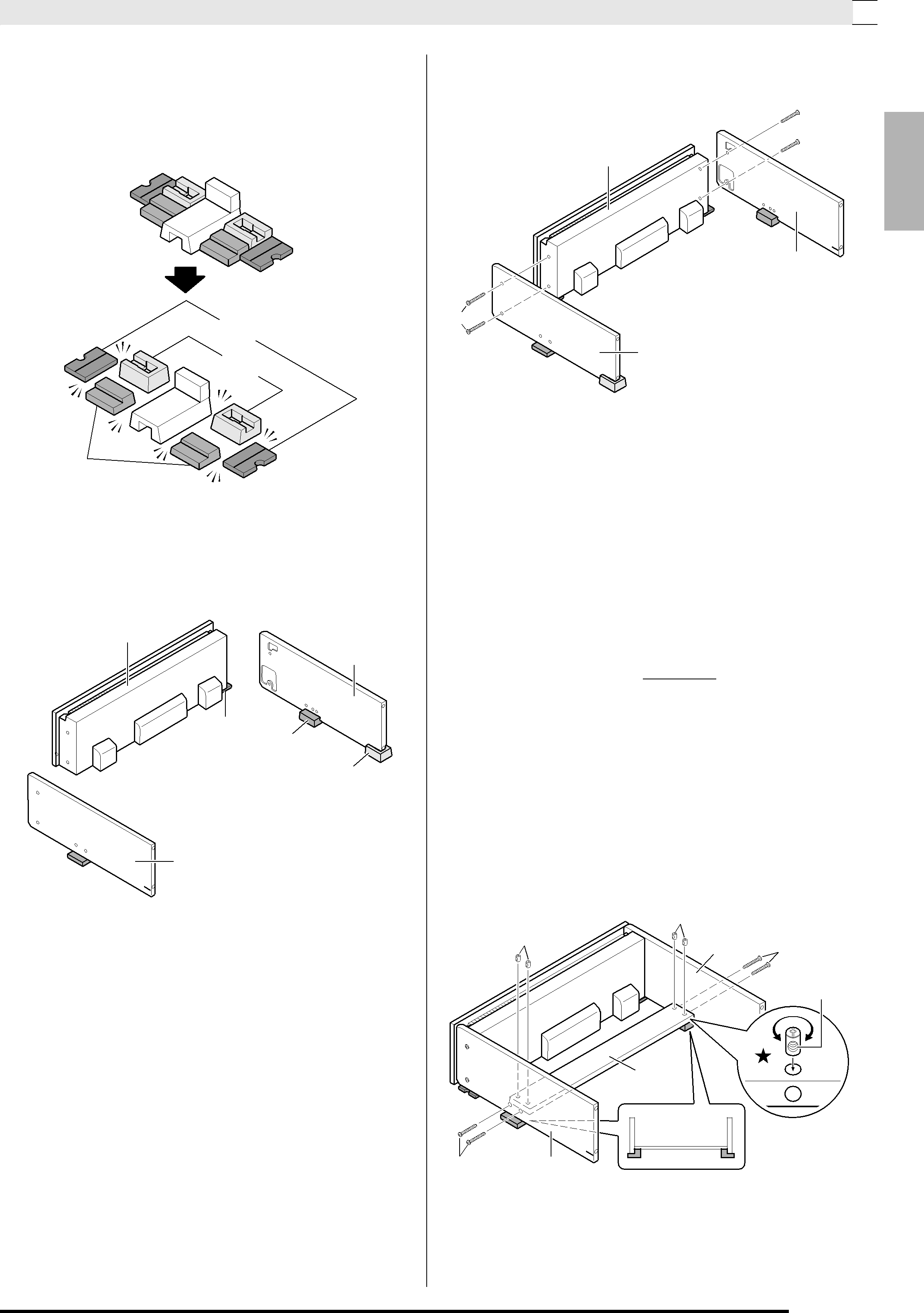
Getting Ready 

2. Divide the polystyrene foam packing material as shown in the nearby illustration.
•After dividing up the material, you should end up with a total of six pieces named
3. Place the Digital Piano on the packing material pieces
Digital Piano
B
 Q-(a)
Q-(a)


4. Attach the side panels A and B to the piano.
•Secure the side panels using four screws F.
 F
F
Digital Piano
B 
F
A
5. Attach the back panel C to the side panels
Aand B. Use the four screws F and four joint connectors P.
•Insert the four joint connectors P at the four locations on the back panel C. The holes in the joint connectors should be aligned with the holes in the back panel C.
•Lift up the back panel C so its screw holes align with the screw holes in the side panels, and then tighten
the screws F.
If you have trouble inserting the screws F into the joint connector P holes, use a screwdriver to rotate the joint connector ( in Figure).
*CAUTION
•Never try to force the screws! Forcing the screws F to turn while the joint connector P holes are not aligned correctly can strip the screw threads.
•Partially tighten the screws on one side of the back panel C and then fully tighten the screws on the other side.
•Next, fully tighten the screws that you partially tightened.
| P |
|
P | B | F |
|
English
Screw hole
C
F A 